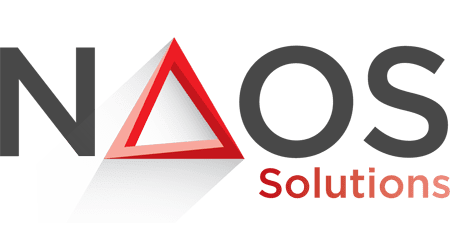Did you know that 60% of top candidates abandon job applications due to lengthy or frustrating hiring processes? Imagine losing out on the perfect hire because of an inefficient system. Traditional recruitment methods can cost your company its most valuable asset – its workforce.

But it doesn’t have to be this way. Data-driven decisions can help you secure top talent faster and more efficiently.
This guide will show you how to leverage talent acquisition analytics to transform your hiring process from a tedious chore to a strategic advantage.
DEFINING TALENT ACQUISITION ANALYTICS: A PRACTICAL APPROACH
Recruitment analytics empowers your HR team to identify bottlenecks and make informed decisions, leading to better hires and a more efficient recruitment funnel. There are two types of analytics: basic and intermediate.
Basic Analytics
Small and medium-sized enterprises (SMEs) can benefit from basic analytics. These foundational metrics create a snapshot of your hiring performance. Using applicant tracking systems (ATS) or spreadsheets, you can easily track them. Some of the talent acquisition metrics covered by basic analytics include:
- Time to fill
- Cost per hire
- Source of hire
Intermediate Analytics
As your organization matures, intermediate analytics will help you uncover significant insights for your hiring process, with recruitment KPIs like offer acceptance rate, retention, and time-to-productivity.
Predictive analytics are also a part of intermediate recruitment analytics. This approach leverages historical data and statistical models to forecast future hiring needs and trends so you can optimize your recruitment analytics plan and stay ahead of the competition.

BENEFITS OF USING ANALYTICS IN TALENT ACQUISITION
Here are some benefits of leveraging analytics in attracting and acquiring talent:
Data-Driven Decision-Making Enhances Hiring Quality
A data-driven talent recruitment strategy means relying on objective data and key metrics – quality of hire, performance data, assessment results, etc. – at every step. This way, hiring managers can reduce biases and make more informed decisions.
For instance, you can study the performance of past hires to uncover patterns that predict success in specific roles. The difference between top performers and underperformers may be the source of hire, prior experience, or current work module. You can create accurate candidate profiles and targeted interview questions in the future.
Effective Candidate Sourcing Through Analytics
Analyzing data on the source of hire can help you pinpoint the most effective channels for recruitment so you know where to prioritize your efforts. For example, if employee referrals consistently lead to higher-quality hires, allocating more resources toward referral programs is the next natural step.
Recruitment analytics can also provide insights into your ideal candidates’ demographics, interests, and behaviors. You can use this data to create highly targeted acquisition marketing campaigns that resonate with your desired candidates.

For instance, if your data shows that top performers are active on specific social media platforms, you can focus your advertising efforts on those channels.
Reducing Time-to-Hire with Analytical Insights
The average time-to-hire is 44 days, but using analytical insights can drop this number drastically.
The first step is to use analytics to find bottlenecks in your hiring funnel. For instance, if the interview stage consistently causes delays, you can speed up the process with standardized interview questions or pre-screening assessments.
Determining which processes your recruiters spend the most time on is also wise. Then, automate repetitive tasks like resume screening and interview scheduling to streamline the recruiters’ workflow further.
Improving Candidate Experience Through Data
According to a CareerPlug report, 52% of job seekers have declined at least one job offer due to poor recruitment experience.
Talent acquisition analytics can help improve this experience by tailoring communication strategies based on candidate feedback. If data indicates that candidates prefer email communication over phone calls, recruiters can adjust their approach accordingly.

The most critical step is keeping candidates informed about their progress throughout the recruitment process. If there’s one thing job seekers hate, it’s getting ghosted by recruiters. Data can help you identify the timelines for providing updates, such as after each interview or assessment.
IMPLEMENTING ANALYTICS IN TALENT ACQUISITION: A STEP-BY-STEP GUIDE
Establishing a Robust Analytics Framework
A robust framework is the foundation of any successful talent acquisition analytics strategy. It consists of three elements: data collection, storage, and analysis.
- Data Collection: Determine the key data points you want to track, such as applicant information, source of hire, and time-to-fill. Then, acquire the systems needed to capture this data accurately and consistently. That might involve integrating your Applicant Tracking System (ATS) with other HR tools or using surveys to gather candidate feedback.
- Data Storage: Invest in a secure and scalable data storage solution, whether a cloud-based database, a data warehouse, or even a simple spreadsheet. Your company must always organize the data to be accessible and easily retrievable for analysis.
- Data Analysis: Finally, find the right tools and platforms for analyzing your recruitment data. You can use Google Analytics and Excel, but invest in more sophisticated talent analytics platforms like Deel or Lattice. They offer advanced features such as predictive modeling and machine learning.

Identifying and Tracking Key Recruitment Metrics
Focusing on the most relevant recruitment metrics is the key to gaining meaningful insights from your data. Here are some important metrics you must track:
- Time-to-Fill: The average time taken to fill an open position. A shorter time to fill indicates a more efficient hiring process. Most Applicant Tracking Systems (ATS) have built-in features to track this metric.
- Cost-per-Hire: The average cost of filling a vacancy (advertising, recruiter fees, onboarding expenses, etc.)
- Source of Hire: Where your successful candidates come from (job boards, referrals, social media, etc.). This metric will identify the most effective sourcing channels so you can allocate resources accordingly. Your ATS should be able to track where each candidate originated from – make sure this field is mandatory.
- Quality of Hire: New hires’ overall performance and contribution based on performance reviews, time-to-productivity, and retention rates. This metric can be harder to track as it relies on post-hire performance data. You can integrate your ATS with your performance management system to link hiring data with performance reviews.
- Offer Acceptance Rate: The percentage of applicants who accept your job offers. A low acceptance rate could signal issues with your compensation packages, company culture, or the overall candidate experience. You can use your ATS or a simple spreadsheet to record this data.
- Candidate Experience: Measure candidate satisfaction through surveys and feedback. These insights will pinpoint where your recruitment process may be failing.
- Application Completion Rate: The percentage of applicants who start and complete an application. A low completion rate could mean your application is too lengthy or demanding. Your ATS should be able to provide this data.
- Yield Ratios: The conversion rates at different stages of the recruitment funnel, such as the percentage of applicants who move to the interview stage or interviewees who receive job offers. You will then be able to identify where candidates are dropping off and where you can improve your process.
Incorporating Analytics into Daily Talent Acquisition Operations
Once you have established your analytics framework and identified vital metrics, it’s time to put it to use in your daily recruitment operations. Here are some tips to keep in mind:
- Generate regular reports to summarize your key recruitment metrics, trends, and patterns. Share these reports with your HR team and stakeholders to ensure everyone is on the same page.

- Use these data insights as a blueprint for your daily recruitment decisions. For example, if your data reveals that specific job boards consistently deliver low-quality candidates, you can stop using those boards and focus on more effective channels.
- Keep reviewing your analytics data and adjusting your recruitment strategies as needed. That means rewriting your job postings, optimizing your interview process, or investing in new sourcing channels.
- Most importantly, ensure your HR team has the necessary skills and knowledge to interpret and use this valuable data. Training on data analysis tools, techniques, and best practices will empower your HR team to make intelligent, data-driven recruitment decisions.
TOOLS AND CHALLENGES FOR USER-FRIENDLY RECRUITMENT ANALYTICS
Here is a detailed overview of tools and challenges that support user-friendly recruitment analytics:
User-Friendly Analytics Tools
Not all analytics tools require a Ph.D. in data science. Many user-friendly options, such as enhanced ATS systems, cater specifically to HR professionals. These have built-in analytics dashboards to visualize time-to-fill, application completion rates, and other KPIs.
You can also invest in easy-to-use tools like Tableau, Power BI, or Google Data Studio to transform raw data into visually appealing charts and graphs. Some ATS platforms offer basic predictive models so you can forecast future hiring needs based on historical data without any technical expertise.
Addressing Common Challenges in Analytics Adoption
Talent acquisition analytics pose challenges, but these strategies can help overcome them.
- Data Privacy and Security: Invest in analytics tools with robust data security measures, like encryption and access controls. You can also anonymize or pseudonymize candidate data whenever possible.
- Overcoming Resistance to Change: Around 61% of HR managers fear job replacement due to automation and AI, which may explain the resistance to change. You can prevent this resistance by emphasizing how analytics will benefit the HR team and keeping them in the loop throughout the implementation process.
CONCLUSION
Talent acquisition analytics is the key to creating a more thoughtful, efficient hiring process. These data-driven insights will help you speed up recruitment and attract top talent who perfectly fit your company.
Ready to incorporate analytics into your talent acquisition strategy? Contact NAOS Solutions for expert advice and support.

